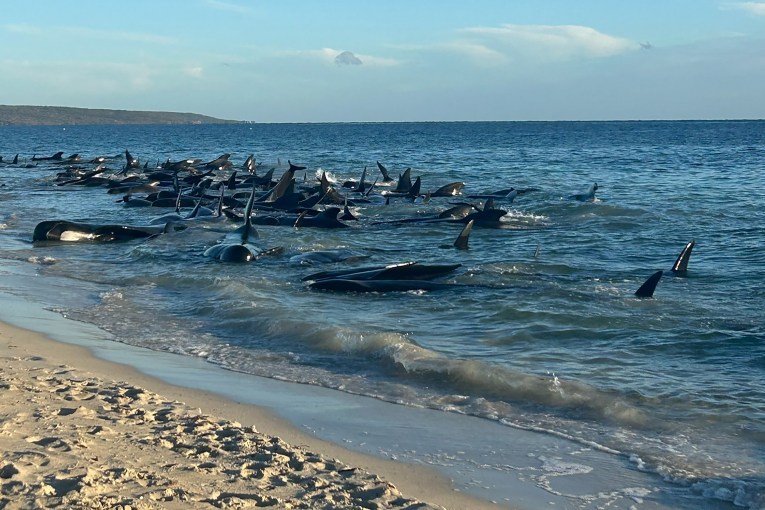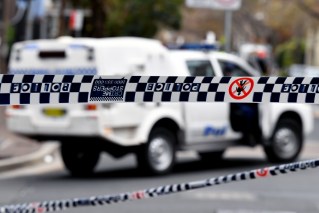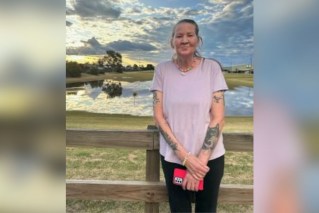Australia’s vaccine rollout is a “shambles”, critics scoff, but the federal government insists things are under control.
As it has for months, the government faces a barrage of criticism that the vaccine program is too slow, isn’t diverse enough, and has been hamstrung by bad decisions or hesitation in locking in deals.
“What I don’t think is a sensible decision is the reliance on AstraZeneca, putting all their eggs in that basket and the chickens have come home to roost,” Labor leader Anthony Albanese chided on Tuesday.
Recent weeks saw escalation of overseas supply bottlenecks, slower-than-hoped production at Melbourne’s CSL facility, and a body blow in the decision to restrict AstraZeneca for under-50s. Fears about very rare cases of blood clots worsened overnight as Johnson & Johnson, which makes a vaccine a lot like AstraZeneca’s, suspended its rollouts in America and Europe after US officials found six cases of blood clots from over 6.5m vaccinations.

Australia pinned most of its hopes on AstraZeneca. Photo: AAP
Prime Minister Scott Morrison has doubled the nation’s order of Pfizer doses, but the strategy to overwhelmingly lean on AstraZeneca – at least in the rollout’s early stages, until Pfizer and Novavax doses become available – has been questioned.
Labor has consistently called for Australia to follow international “best practice” and lock in up to seven vaccine deals, instead of the current three, to have more choice and back-up options in the event of supply or production issues.
So did the government make a bad bet? Should the risk have been spread more among other vaccines? TND investigates.
The background
When Australia decided to pursue a deal with the University of Oxford/AstraZeneca vaccine, it was one of the most promising and well-supported candidates in the world.
In August, standing at an AstraZeneca facility in Sydney, Mr Morrison noted there were some 160 vaccine candidates in development worldwide, and Australia identified Oxford’s as among the most promising. He claimed the deal would put Australia at “the front of the queue”, even though the announcement came many weeks after other nations signed their first vaccine deals.
At that stage, the novel mRNA vaccines like Pfizer and Moderna were still considered far-fetched bets, Australian National University infectious diseases expert Peter Collignon said.
“You couldn’t have picked it until December, when the first results came out,” Professor Collignon told The New Daily.
“That’s not what I would have put my money on six months ago.”
Later trials revealed the mRNA vaccines as the world’s best.
But Hassan Vally, associate professor in epidemiology at La Trobe University, said governments worldwide were “flying blind” when ordering vaccines in 2020, forced to sign deals without knowing advanced clinical trial results.
“The vaccines weren’t trialled when we were making our bets,” he told TND.
“We made our bet on very respected researchers at Oxford and AstraZeneca. That seemed like reasonable choices.”
In the early pandemic stages, many experts wondered if a COVID vaccine would ever be developed.
A vaccine for a coronavirus had never been developed before, let alone in such a short time.
Now, there’s about a dozen in production worldwide.
“I’m blown away that we even have one vaccine, let alone multiple,” Associate Professor Vally said.
“There were so many variables and so much uncertainty. It’s easy to be wise in retrospect … I’m not a cheerleader for the government. They could have done a number of things better, but this criticism is a little unfair.”

Scott Morrison with Jane Malysiak, the first person in Australia to get a COVID vaccination. Mr Morrison was the second.
The other contenders
At the time of the AZ announcement, Australia had not yet locked in deals for Pfizer.
The University of Queensland candidate, considered a world-leading possibility, was in production.
Mr Morrison said in August the government didn’t want to be “putting all our eggs in one basket”, and was backing the UQ vaccine, too.
However, the government scrapped the UQ deal after it was found to have an unfortunate drawback – registering a false-positive for HIV – and instead boosted orders of AstraZeneca and Novavax by several tens of millions.
Other epidemiologists spoken to by TND, who declined to speak on the record, claim Australia made a wrong decision there. Australia was already late to the party, and faced criticism from Labor for not inking deals sooner.
One leading expert claimed Australia should have invested in other vaccine candidates, instead of upping existing deals, when the UQ vaccine was dumped.
“It’s not that we have the wrong vaccines, but that we’re not diversified enough,” they said.
That was echoed by ABC journalist Norman Swan.
.@NormanSwan believes Australia is looking at the wrong vaccines.
"What we need is 20 million or more of Moderna that are geared to the new variants, Moderna is leading in developing of vaccines for new variants. We should be booking Moderna and we haven't." pic.twitter.com/Y9Chs7vh1s
— News Breakfast (@BreakfastNews) April 12, 2021
Journalists have consistently asked why Australia hasn’t inked deals with Moderna or Johnson & Johnson, currently rolling out vaccines in the United States.
Health Minister Greg Hunt said the government followed the expert advice of health department medical experts in choosing which vaccines to buy. The federal government ruled out buying the single-shot Johnson vaccine on Tuesday, and Professor Collignon thinks even if we had a Moderna deal, supply wouldn’t come.
“I don’t think they would have been delivered. We had a contract with AstraZeneca but when it came to the crunch, they said no,” he said.
“Other countries have uncontrolled transmission. You think Moderna is going to let Australia have vaccines when we’ve got no transmission?”
Another factor, reportedly, is Moderna was reluctant to supply doses to nations without a government compensation scheme for vaccine side effects.
Mr Hunt wouldn’t comment on this when asked on Tuesday, only saying Australia had built in “indemnities” for doctors around vaccine administration.
“Why do we continue to have fewer options for vaccines in Australia than any other comparable country?” asked Labor’s health spokesman Mark Butler.
But Mr Hunt said the government had simply followed expert medical advice on vaccine choices.
“Sometimes people say ‘we would like you to purchase this vaccine or that vaccine’ and my response is, our set of advice comes from the chief scientist, the head of the CSIRO, the Chief Medical Officer, the head of the Scientific and Technical Advisory Group, Professor Murphy. Where is yours coming?” he said Tuesday.

Health Minister Greg Hunt. Photo: AAP
The strategy
Mr Hunt and health department secretary Brendan Murphy have consistently explained that Australia decided to invest in one vaccine in each of the leading categories; Pfizer in the mRNA category, AstraZeneca in the adenovirus category, and Novavax in the protein category.
Professor Murphy said last week Pfizer and Moderna “are very similar”, in defending the decision not to invest in Moderna.
Government sources said the decision to not invest in Johnson & Johnson was because it is “the same type of vaccine as the AstraZeneca”.
But economist Steven Hamilton claims similarity shouldn’t have been an impediment to inking more deals, and uncertainty over vaccines should have encouraged more diverse contracts.
“The riskiness means you should have placed more bets. We didn’t know which ones were going to work, which should lead you to do more, not less,” he told TND.
“Thinking it’s too risky, and we don’t want to bet on it, was a mistake.”
Mr Hamilton, chief economist at the Blueprint Institute, has written numerous articles with another respected economist, the University of NSW’s Richard Holden, calling for more vaccine deals.
Speaking from a business and economic standpoint, the pair argued Australia should have had more choice.
“We didn’t have to place just one bet. You can place all the bets. We should have put money on all the companies,” Mr Hamilton said.
“If anything, we got incredibly lucky there’s no community transmission now. Imagine if we’d had no vaccines and the virus was raging – how would the vaccine strategy be seen then?”
However, Associate Professor Vally said he felt the government’s plans were “reasonable”.
“How much do you cover your bases? Do you bet on every horse in the race, to make sure you win?” he asked.
The future
The federal government has ruled out setting any vaccination targets for now.
Up to one million AstraZeneca doses will roll off CSL production lines weekly, and continue to be given to over-50s, but most under-50s will likely not receive their first dose until well into the back half of the year.
The extra Pfizer doses, which younger people have been recommended to get, won’t arrive until at least October.
Somewhere between now and then, Novavax is hoped to start supplying doses; either from overseas, or potentially made locally at CSL, though that is not certain.
Johnson & Johnson has been been ruled out, and Moderna talks seem to be stalled, but the government has not ruled out making further deals in future.









